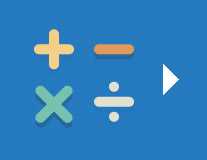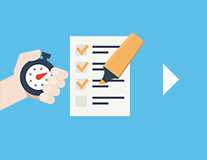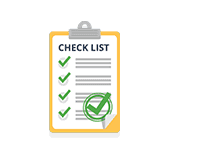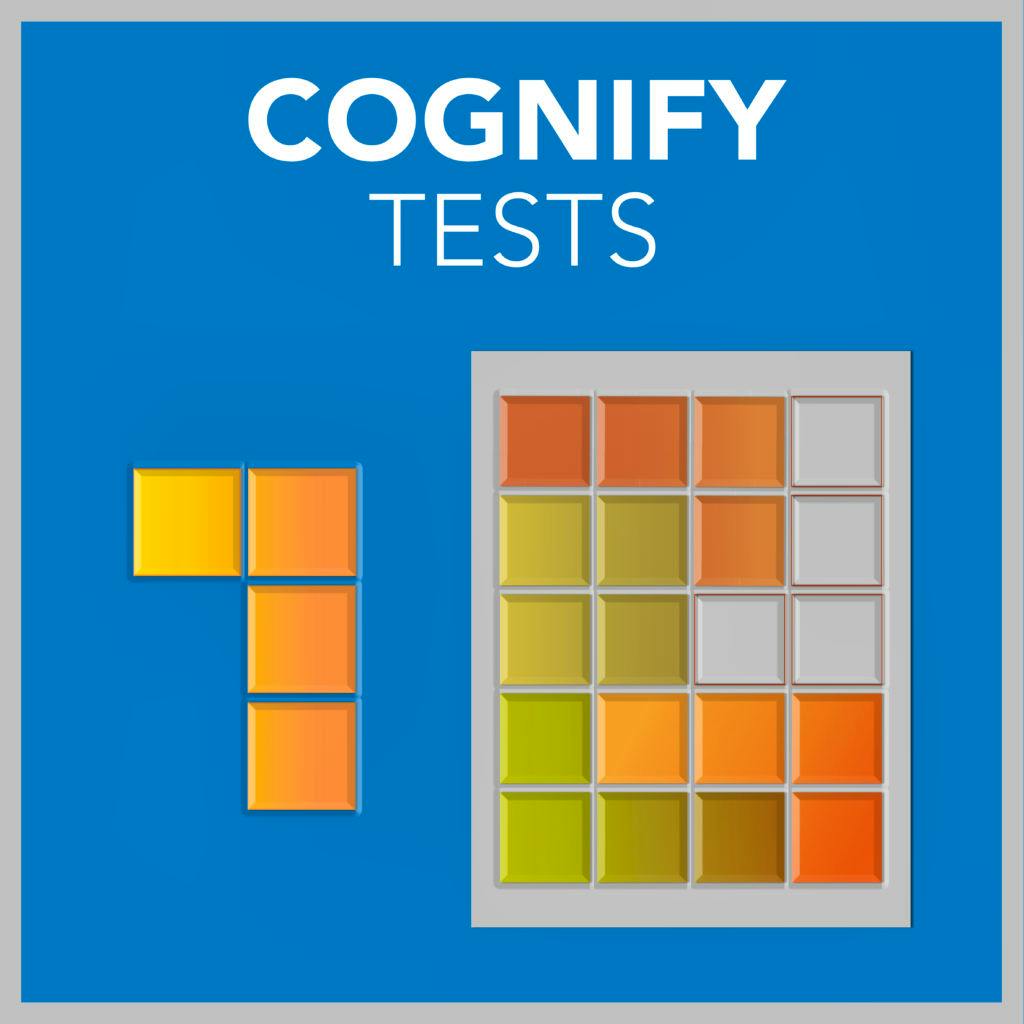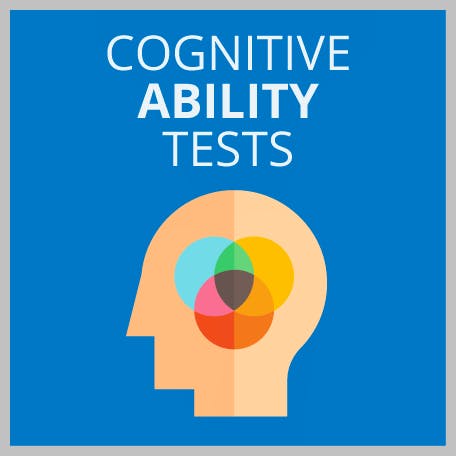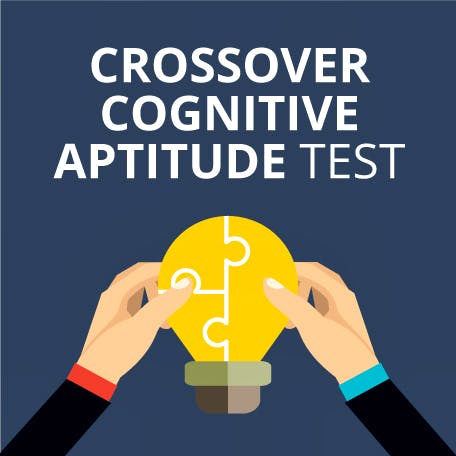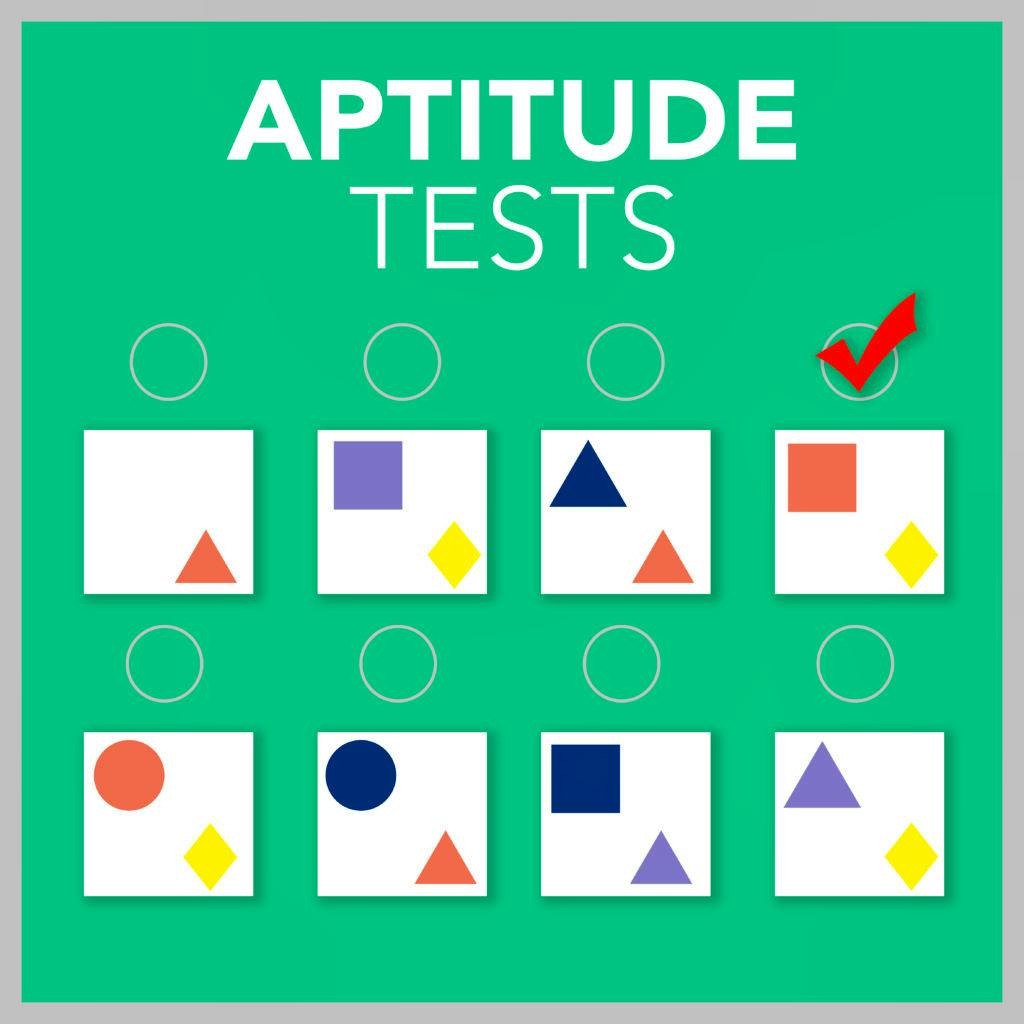Train Driver Tests Guide: with Example Questions + Answers
Updated November 18, 2023
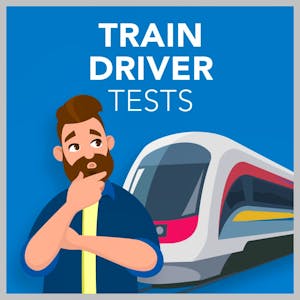
- What Is the Train Driver Test?
empty
empty
empty
- What Is Included in the Train Driver Assessment?
- Group Bourdon Test (GBT)
empty
- TEA-OCC
empty
empty
empty
empty
- Trainability for Rules and Procedures Test (TRP)
empty
empty
empty
- Adaptive Tachistoscopic Traffic Perception Test (ATAVT)
empty
- WAFV Vigilance Test
- Vigil Test
- 2Hand Two Hand Coordination Test
- Situational Judgement Exercise (SJE)
empty
- Other Administered Tests on the Train Driver Exam
- Train Driver Psychometric Test Examples
empty
empty
empty
empty
empty
empty
- Written Communications Test Sample Question
- How to Prepare for the Train Driver Test
- Can you Retake the Train Driver Assessment?
- Train Driver Tests Globally
- Frequently Asked Questions
- Final Thoughts

The train driver test is used to establish whether a candidate is suitable for work as a train driver. This unique suite of tests includes psychometric assessment tools such as:
- The Group Bourdon Test (GBT)
- Test of Everyday Attention (TEA-OCC)
- Adaptive Tachistoscopic Traffic Perception Test (ATAVT)
- Situational judgement tests
- Vigilance tests
- Written communication tests
What Is the Train Driver Test?
In most countries, you will need to sit the train driver online test if you want to work as a train driver. If you have been asked to sit the assessments, there is no train driver psychometric test cost associated with the train driver exam.
Working as a train driver is a challenging and demanding role. As a train driver, you must be able to ensure the safety of passengers at all times.
The UK’s train driving tests are some of the most challenging. As well as testing aptitude for the job role, they are used to assess whether candidates have the mental abilities to cope with the stress and demands of the job role.
The train driver test is used to establish whether a candidate is suitable for work as a train driver. The train driver test is a unique group of psychometric tests for train drivers designed to assess the psychomotor and cognitive skills needed to work safely as a train driver.
The tests cover a range of psychometric assessment tools, including:
- Group Bourdon Test (GBT)
- Test of Everyday Attention (TEA-OCC)
- Trainability for Rules and Procedures Tests (TRP) 1 and 2
- Adaptive Tachistoscopic Traffic Perception Test (ATAVT)
- WAFV Vigilance Test
- Vigil Test
- Situational Judgement Exercises (SJE)
The structure of the tests that you are required to sit will depend on the TOC you have applied to work for.
You may be asked to sit the tests on the same day as your job interview or on a separate day.
In some cases, the assessment process, including the train driver test, will be spread out over several days.
The selection process for train driver roles is highly competitive. You will only be given two opportunities to pass the train driver test. So, if you want to work as a train driver, you must know what to expect from the tests.
The train driver test assesses attributes including attention span, concentration, reasoning, perception and memory. It also tests a candidate’s hand-eye coordination, alertness and reaction time.
This carefully curated test pack assesses both cognitive and psychomotor skills according to stringent selection criteria laid out by the railway authorities, including the Rail Safety Standards Board (RSSB).
The train driver test is used by most of the Train Operating Companies (TOCs) in Europe, including the UK. However, some TOCs choose to use company-specific variations of the tests.
Here is an overview of the train driver test in other countries around the world:
United States Train Driver PsychometricTest
In the USA, you will often be expected to participate in group exercises and mechanical reasoning tests alongside the cognitive and psychomotor elements of the train driver tests.
Completing an internship in a railway company or formal training in locomotive engineering is highly desirable.
You will also need to be Federal Railroad Administration (FRA) certified. This certification covers safety and general awareness.
In some cases, you will be permitted to complete this qualification after receiving an offer of employment.
Australia Train Driver Psychometric Test
In Australia, the train driver test includes:
- Logical reasoning
- Verbal reasoning
- Numerical reasoning
- Mechanical reasoning
- A work safety test
The work safety test questions are based on Track Safety Awareness (TSA) criteria, which vary considerably between the different TOCs, often referred to as 'Track Owners' in Australia.
Some Australian TOCs require specific versions of tests; for example, for Situational Safety Awareness – Psyfactors SSA (Mobile Equipment Operator Version) and for Abstract Reasoning – Aptitude Profile Test Series (APTS).
In addition, a Certificate IV in Train Driving is recommended. This comprises 21 competency units (12 core plus general and specialist elective units).
India Train Driver Psychometric Test
In some countries (including India), the recruitment process for train drivers is centralised and administered by the government.
If you want to drive a locomotive in India, you will need to sit the pan-India Railway Recruitment Board exams, which are announced periodically.
These tests will assess your English, Mathematics and general knowledge. They also include a variety of aptitude tests.
What Is Included in the Train Driver Assessment?
The train driver test assesses attributes including attention span, concentration, reasoning, perception and memory.
It also tests a candidate’s hand-eye coordination, alertness and reaction time. This carefully curated test pack assesses both cognitive and psychomotor skills according to stringent selection criteria laid out by the railway authorities, including the Rail Safety Standards Board (RSSB).
The train driver test is used by most of the Train Operating Companies (TOCs) in Europe, including the UK. However, some TOCs choose to use company-specific variations of the tests.
Read on to learn more about the train driver assessment tests.
Group Bourdon Test (GBT)
Group Bourdon Test is a concentration test and one of the primary assessments in the train driver test suite.
GBT challenging test focuses on the test-taker's ability to work against the clock to concentrate on and identify a required pattern from a given test.
Unlike other ‘odd-one-out’ types of logical reasoning psychometric tests, in the Group Bourdon Test, the parent set can be visually overwhelming.
The concentration test is repetitive and highly demanding in terms of speed and accuracy.
The GBT consists of five pages. Each page contains contiguous boxes arranged into 25 columns.
Each box has a set of dots in different patterns. In each box, there are between three and six dots. That’s why the Group Bourdon Test also called the train driver dot test.
It is important to work on one page at a time.
You will have two minutes per page – this timeframe is strictly monitored. After the two minutes have passed, you must move on to the next page.
As with most of the assessments on the train driver test, there is usually a practice session at the beginning.
Sample Question 1 - Group Bourdon Test
PRO TIP 1
At first glance, the GBT may seem deceptively simple. However, the visual impact of a large page full of similar-looking boxes and nearly identical patterns can easily play tricks on the eye.
With just two minutes per page, you must get the maximum number of correct picks the first time. There is no second chance to revisit and revise the answers.
PRO TIP 2
It is impossible to finish all of the rows on a page.
If you take just half a second to scan one box in a row, checking a single row of 25 boxes and marking out the four-dot boxes will take you around 15 seconds.
The allocated time for each page is two minutes (120 seconds).
Try not to worry about finishing all of the rows. Even if you can get through seven or eight rows, your aim is to accurately identify the correct number of boxes with four-dot patterns in all of these rows.
This is a much better approach than trying to check through ten rows and getting the numbers wrong on six of them.
PRO TIP 3
Putting in plenty of practice will help your brain to scan an entire row much faster.
You will be able to visualise the patterns in one glance, which means you will be able to highlight the intended four-dot boxes in a row more quickly.
After you spend a while practising, you will notice that the four-row boxes seem to stand out from the others.
To reach this stage, you will need to increase your focus and be prepared to shut the world out, concentrating solely on the task at hand for a solid ten minutes.
TEA-OCC
This test is different from most other psychometric tests. The ‘OCC’ after the hyphen in the name stands for ‘Occupational’.
This assessment is designed to test your ability to concentrate and follow instructions carefully.
It also assesses your auditory skills, general alertness and ability to multitask.
There are three stages to the TEA-OCC test. As you progress through the stages, the test becomes more difficult.
Part 1
Part 1 tests your attention to auditory alerts. You will need to listen to a set of tones, which will be played in no particular order.
You will be expected to note the pitch of the tone and count only the low tones.
The beeps are mixed between low tones and high tones. You must count the number of low tones or beeps heard in the series that is played.
This test is designed to assess your ability to concentrate, focus and carry out specific instructions.
Avoid focusing on the high tones – instead, try to remain fully focused on the low tones. The first beep that you hear will usually be a low pitch tone.
When taking this test, you must not allow your mind to wander. The gaps between the tones will vary, and high and low tones will not necessarily be consecutive.
Part 2
Part 2 of the test is a modified version of ‘directory search’.
You will be provided with a grid and asked to find the set that satisfies a group of conditions.
These conditions could be a combination of characteristics, for example:
- Phone number, area code + type of business
- Phone number, area code + user rating
- Phone number, area code + given distance from city landmarks, etc.
The purpose of this test is to gauge your ability to pick up on visual cues, interlink separate characteristics and quickly hone in on an answer – all against the clock.
Listen carefully to the instructions you are given. These will include the desired combination of characteristics.
Discard the ‘story’ element of the directions and stay focused on what exactly is required. You should attempt to isolate the sets with desired characteristics as a single picture.
When tackling this task, it is important to scan with a plan:
- Start from the first row, scanning from left to right as you look for the combination.
- As soon as you spot a candidate cell, mark it straight away – do not wait until you have finished the row.
This will save time and improve your accuracy. Only move on to another row once you have finished working through the previous one.
Part 3
Part 3 of the test is a combination of Parts 1 and 2. This part of the test is designed to assess your multi-tasking ability in addition to accuracy, speed and attention span.
You will need to listen to a series of beeps, which you will need to count according to the instructions.
At the same time, you will need to search a grid (as in Part 2).
To succeed in this test, you will need to put in plenty of train driver assessment practice.
You should work towards being able to correctly carry out the parameter-based number–symbol search while remaining focused on listening out for the beeps.
When working through this section of the test, you must pay close attention to the instructions you are given.
Some TOCs will ask you to pick out the low tones from a random collection of high and low beeps. In other cases, you will only hear one pitch of a tone.
Sample Question 2 - TEA-OCC
When approaching a railroad crossing, what is the proper procedure for a train driver?
A) Sound the horn continuously as a warning. B) Speed up to clear the crossing as quickly as possible. C) Slow down and be prepared to stop if necessary. D) Ignore the crossing since the train has the right of way.
Trainability for Rules and Procedures Test (TRP)
This test is designed to evaluate three areas:
- Understanding
- Retention
- Ability to interpret new information
The TRP is split into two parts:
Part 1
In Part 1, you must show your ability to understand and retain new information.
At the beginning of the test, you will listen to a relatively long audio clip. This will usually be related to trains.
You will need to listen very carefully and attentively, making mental notes along the way.
You will not usually be allowed to make any written notes, although this varies between TOCs.
Once you have finished listening to the audio, you will be handed an information sheet on the topic.
You can make written notes as you study the passage of text, but after around five minutes the information sheet will be taken away from you.
Next, you will be presented with a set of questions based on the information you have received so far.
All of the questions are multiple-choice. There are usually between 15 and 20 questions to answer.
During this test, make a point of writing notes on the information sheet.
As stated above, this will be taken away from you after five minutes, but it is a scientifically-proven fact that writing notes using pen and paper as you process new information helps to aid retention.
Part 2
Part 2 is also known as the cables and dials test.
This section is designed to assess your ability to interpret visual information and prioritise dealing with possible defect scenarios in a real-world setup.
The TRP-2 is made up of approximately 40 multiple-choice questions. Each question deals with different variations of sets of multiple dial readings.
You will be expected to check the dials and the key provided, which mentions the relative priority of colour codes of sectors of the dials.
After that, you will need to identify the correct sequence to address the dial readings in order of priority.
These should be arranged from highest to lowest priority. Again, you will be required to work against the clock.
When taking this test, make sure that you carefully check the visual information you are provided with.
Some of the more difficult questions might include dial readings, which are given as numbers along with sectoral colour coding to indicate priority.
For these questions, you will need to assign a numerical value to prioritise the order of defect fixing in addition to interpreting the relative significance of the coloured sections of the dials.
Sample Questions 3 - Trainability for Rules and Procuedures (TRP)
In a safety-critical environment, which of the following actions demonstrates a strong adherence to rules and procedures?
A) Occasionally deviating from established procedures to save time. B) Always following established procedures, even in non-critical situations. C) Only following rules when closely supervised by a manager. D) Memorizing procedures and never referring to written documentation.
Adaptive Tachistoscopic Traffic Perception Test (ATAVT)
This is a psychometric test designed to assess visual perception and information-capturing speed during exposure to very brief stimuli.
This is usually a visual stimulus, such as a brief flash of a picture.
In this computer-based test, you will be presented with a visual scene for one second or even less. This will usually be a scene from a road or city street.
Before the picture appears, you will hear an alarm tone – this is to alert you that the picture is about to pop up.
After the scene disappears, you will need to answer a series of multiple-choice questions.
You might be asked to identify major items that you saw, for example, buses, cars, pedestrians and traffic lights.
Your task is to tick the items that you saw in the picture.
It may sound simple, but practice is key to passing this test. The quicker you can take in the information from the fleeting visual scene and process it, the higher your score is likely to be.
Sample Question 4 - Adaptive Tachistopscopic Traffic Perception Test (ATAVT)
You are driving on a busy highway, and you notice that the vehicle in the lane next to you is merging into your lane without signaling. What is the most appropriate action to take?
A) Speed up to pass the merging vehicle quickly. B) Honk your horn loudly to alert the other driver. C) Maintain your speed and create a safe distance by adjusting your position within your lane. D) Slam on your brakes to avoid the merging vehicle.
WAFV Vigilance Test
This computer-based test is designed to assess your level of vigilance.
As a train driver, you will be responsible for your crew, passengers and/or goods being carried.
This test seeks to find out how long you can stay focussed and how alert you remain to externally-applied stimuli.
Working quickly and accurately is important for this test.
Your test result will include a weighted average of correct responses against incorrect answers given, as well as the mean value of your reaction times.
During the test, you will see a flashing grey square on the computer screen. The square will change colour, usually to different shades of grey, seemingly at random.
Your task is to press the green button as soon as you detect a change in the colour of the square.
The test takes approximately half an hour, so you will need to stay focused and alert throughout.
At times, there may be a long gap between colour changes. This is to mimic real-life scenarios.
For example, you might be driving the train straight ahead for a long time before you notice an animal on the track.
In other situations, nothing happens but you must stare ahead and remain vigilant, looking out on the track for prolonged periods without evident fatigue.
Vigil Test
This is a different version of the vigilance test. Its purpose is to check your ability to stay alert and responsive to critical events while monitoring seemingly monotonous tasks.
Instead of a flashing grey square, you will see a bright dot moving across a circular path.
Other versions of the test exist, but this version is the most common.
The dot flashes and moves around in small jumps, following pre-set stepping stones.
As soon as you see a flashing dot take a double jump, you will need to react and register your response by pressing the green button.
Some variations of the test do not show the circular path jotted down on the screen to increase the level of difficulty.
Whichever version of the test you take, the end purpose is the same – to check against fatigue and decreasing efficiency over prolonged intervals.
2Hand Two Hand Coordination Test
As the name suggests, this test assesses coordination between both hand movements. It also assesses hand-to-eye synchronisation.
The 2Hand Two Hand Coordination Test is administered using a custom computer terminal with a knob or joystick. On the screen, you will see a virtual track and ball.
You will need to use the knob or joystick to regulate the motion of the ball, ensuring it travels through the winding trajectory shown on the monitor without skidding off the track.
The key parameters tracked during this test are total mean duration and total mean error duration.
Try to stay relaxed during the test, as tension will make it more difficult.
Situational Judgement Exercise (SJE)
These exercises are used to understand a candidate’s behaviours and find out how they might react in a given situation.
Honed by many years of research and analysis of behavioural science, the situational judgement exercise (SJE) (or sometimes known as the situational judgement test, SJT) is now a relatively standardised test.
It offers a reasonable degree of accuracy in predicting how a person might behave in a particular situation.
For these tests, you must show high levels of professionalism and an excellent awareness of safety procedures.
You will be given a scenario with a choice of possible responses. Your task is to mark the options from most to least favourable.
Typically, the options are listed as follows:
- Very unhelpful
- Unhelpful
- Neither unhelpful nor helpful
- Helpful
- Very helpful
Written Communication Test
This is often included as an optional element of the train driver test. There is no pass-or-fail impact.
However, some TOCs insist on including the written communication test in the assessment process.
The purpose of this test is not to check your understanding of literature or advanced writing skills, but to make sure that you can express yourself clearly and legibly through written reports or when describing a situation that warrants a notification.
The test format varies. Sometimes, you will be given a particular topic or situation. In other cases, you will be asked to write a summary of a cartoon.
Whatever you are asked to do, you must keep your written communication simple and legible.
You should maintain the basic elements of grammar and sentence structure and avoid using slang or social media abbreviations.
Other Administered Tests on the Train Driver Exam
In addition to the tests listed above, some TOCs include further tests on logical reasoning and numerical reasoning.
If you have been asked to sit the train driver exam, it is always best to ask the TOC to confirm the suite of tests you will be expected to complete.
You might also see different versions of the tests outlined above.
For example, the Rules Acquisition Aptitude Test (RAAT) is a variation of the TRP test with the audio section removed.
The Safe Concentration and Attention Test (SCAAT) test is an alternative version of the tests used to assess concentration and attention.
Consider the following rows of dots. In each row, mark the cells or boxes that contain patterns of only four dots.
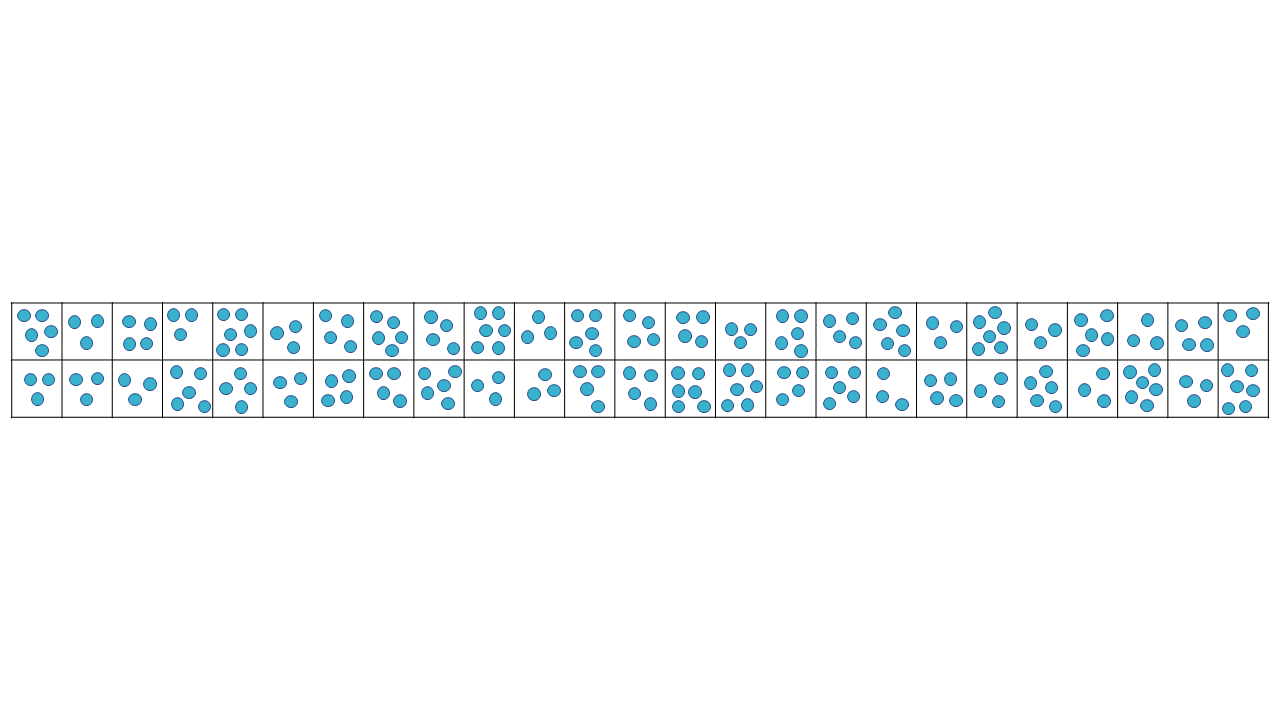
In this example, the four-dot cells have been marked out (crossed out diagonally). Check how you are expected to mark your answers with the TOC instructor/assessment centre representative.
Study the following informational grid. Work out the number of restaurants with phone numbers in the area code (01342).
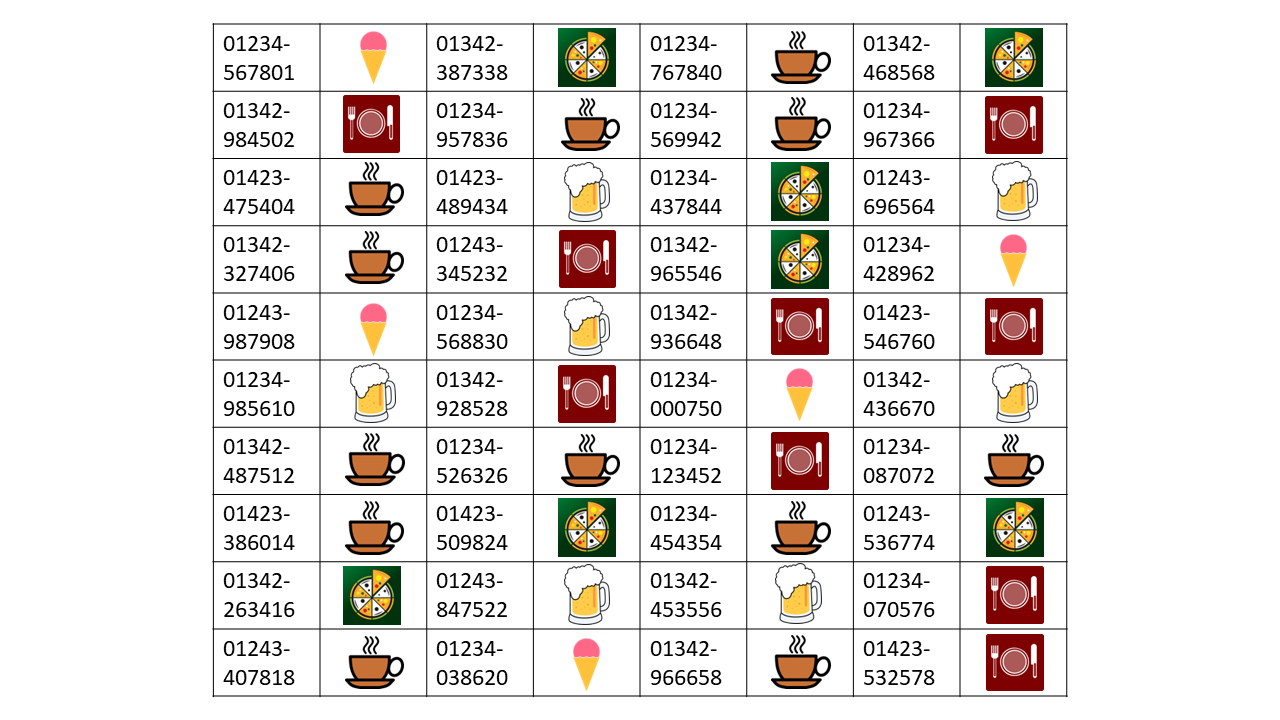
You identify the following readings on three dials. Assuming the recommended priority of checking for defects (see key below), in what order should the dials be addressed?
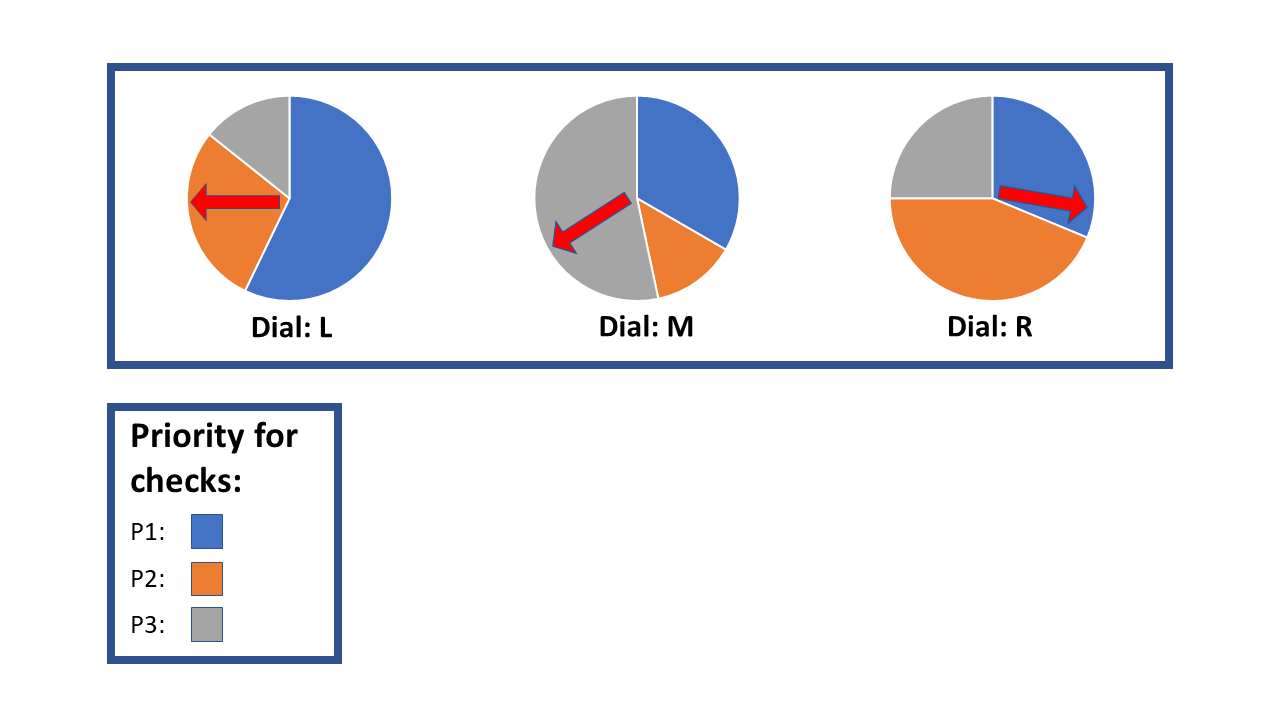
a) MLR
b) RLM
c) MRL
d) LMR
If you need to prepare for a number of different employment tests and want to outsmart the competition, choose a Premium Membership from JobTestPrep.
You will get access to three PrepPacks of your choice, from a database that covers all the major test providers and employers and tailored profession packs.
Take a glance at the picture below. To simulate the test, remember to cover it with your hand as soon as you see it.

Now answer the following question:
Question:
Which of the following did you not notice in the picture?
a) Tram
b) Pedestrian
c) Bike
d) Car
Take a glance at the picture below. To simulate the test, remember to cover it with your hand as soon as you see it.

Question:
Which of the following did you notice in the image? (You may need to select more than one answer)
a) Train
b) Car
c) Bike
d) Pedestrian
You have just started your shift. You are driving the train during the morning rush hour.
As you cross the second station on your route, the ticket collector tells you there is an intoxicated passenger in the third compartment. The ticket collector states that this passenger is trying to break an emergency window using the fireman’s axe.
What do you do next?
Rate your responses from 1 to 5. The option rated as 1 should be the response that you believe would be ‘very helpful’ in the context given.
a) Ask the ticket collector to seek help from other passengers and try to overpower the unruly passenger. Meanwhile, you continue to focus on making sure the train runs to schedule and passengers on board reach their destinations on time.
b) Use the train’s public address system to speak to the unruly passenger, telling them that unless they restrain themselves, they will be evicted from the train at the next station stop. Meanwhile, you stay focused on keeping the train running on time.
c) Alert the emergency response services and the next station of the situation. This will involve notifying the next station and your supervisor that you will be stopping the train at the next stop, so there will be a delay to the service until the emergency responders deal with the situation on board.
d) Stop the train at the next station. You will rush to the third compartment, confident that your level of fitness and strength will allow you to overpower the unruly passenger and keep the other passengers safe. You then notify the emergency responders and station crew to take custody of the offender.
e) Do nothing and allow the ticket collector to deal with the situation. You decide to remain focused on driving the train and ensuring that the service runs on time.
You are driving the train, approaching London Kings Cross station. As you move forward, you notice there is a person on the track.
What do you do next?
a) Immediately inform the railway signaller, before applying the emergency brake
b) Bring the train to a halt using the regular braking procedure. This is because sudden braking may cause disruption or injury to your passengers
c) Apply the emergency brake, then inform the railway signaller of the situation
d) Bring the train to a halt using the regular braking procedure, then inform the railway signaller of the situation
Written Communications Test Sample Question
You will be provided with a laminated sheet that illustrates an event using pictures.
Afterwards, you will have eight minutes to write a report detailing the incident.
This will assess your written accuracy, legibility, comprehension and overall structure.
To practise, try writing a report on a news story you have heard about on the radio or writing a report on what happened in your favourite cartoon strip.
How to Prepare for the Train Driver Test
Practice is vital when preparing for the train driver’s tests. The more preparation you put in, the more likely you are to pass the tests on your first attempt.
Step 1. Read the Preparation Pack
Most of the TOCs send out a preparation pack including practice tests before the assessment day.
You should read through all of this information carefully and spend time practising the relevant question types.
It is also vital that you carry out independent research, as the actual tests can be quite different to the example tests sent out by the TOCs.
Step 2. Practice Time Management
Working against the clock is another important element to consider.
The focus of the train driver tests is to assess your performance within a specified timeframe. Learning to answer questions quickly and accurately should help you to achieve a good score and feel calmer on the day of your assessment.
Step 3. Don’t Worry About Missing a Question
Very few people can complete all of the questions included in the train driver’s tests.
Don’t despair if you feel unable to answer all of the questions within the stipulated time.
Instead, try to focus on accuracy as well as speed.
Step 4. Remain Calm and Focused
No pre-existing knowledge is required for the train driver tests. None of the questions or assessments is especially difficult if you have put in adequate preparation.
However, the tests are designed to be mentally challenging, so focus and concentration are key.
Step 5. Identify Your Areas of Weakness
Be honest with yourself – which areas do you find the most difficult?
Once you have identified your areas of weakness, you can begin trying to overcome these through practice and preparation.
Step 6. Take Practice Tests in Quick Succession
On the day of the assessment, you will be expected to complete the tests one after the other.
Practising in this way will help to improve your concentration and mental stamina.
Step 7. Prioritise Your Wellbeing
Practice and preparation are important, but you also need to take care of your health.
Get a good night’s rest, make sure you are hydrated and eat a nutritious breakfast on the morning of the tests.
Can you Retake the Train Driver Assessment?
Most TOCs only allow two attempts at the train driver’s test.
Remember, the TOCs are a tight-knit group of companies, so they may share assessment information on candidates.
If you are unsuccessful on the train driver’s tests, most TOCs will not allow you to retake the test for a minimum period of six months.
Train Driver Tests Globally
The train driver assessment tests and qualifying criteria are different if you are outside of mainland Europe.
The train driver test refers to a suite of assessments used in the hiring process for train drivers.
The tests are designed to assess a candidate’s psychomotor and cognitive skills to establish whether they are a good match for the role of a train driver.
The exact tests you will take varies between TOCs.
The train driver test refers to a set of assessments used in the selection process for train drivers.
Candidates do not require any specific knowledge to pass the tests. However, they must demonstrate the required level of mental agility and cognitive skills.
All of the tests are conducted under strict time constraints, which adds an extra element of difficulty.
You can find a range of resources online to help you prepare for the train driver test.
If you are looking for a comprehensive guide to the train driver test with practice questions, the JobTestPrep website is a good place to start.
The number of questions on the train driver test will depend on the specific tests you have been asked to take. You can find out more from the TOC you have applied to work for.
To be eligible to take the train driver test, you will need to meet the minimum application criteria. This can vary between TOCs.
Yes, all of the tests in the train driver test suite are timed. You must work against the clock, demonstrating that you can work quickly and accurately under pressure.
The expected earnings of train drivers depend on their skills, years of experience, and the company their work for.
For example, the average salary of a train driver with a few years of experience in the US is around $47,000. Whereas, senior train drivers with more than 15 years of experience can earn anywhere between $100,000 to $200,000 a year.
To become a train driver, you'll need excellent concentration skills, patience, observation and memory skills, attention to detail and thoroughness.
You'll also need to possess the aptitude for operating and controlling train equipment and a knowledge of public safety standards.
You'll likely need to work well under pressure and alongside others, accept criticism of your work and know how to do basic tasks on a computer.
While not all railway companies require specific forms of training to hire you as a train driver, you'll need to have a basic knowledge of railroad work. You'll likely need to take a locomotive engineer training course.
Apply for a beginner-level position to get the railroad training you need, including learning about the policies, routes and operations of the railroad.
This includes roles like conductors, switch operators and rail yard engineers.
The train driver tests evaluate the candidates' concentration, attention span, memory and perception, reaction time, alertness and hand-eye coordination.
The specific psycho-motor and cognitive skills being tested depend on the criteria set by the railway authorities the candidates are applying for.
The most common tests included in the train driver tests are:
- The train driver mechanical reasoning test
- Trainability for Rules and Procedures Test (TRP)
- Group Bourdon test
- Test of Everyday Attention (TEA-OCC)
- Traffic perception test (ATAVT)
- Vigilance tests
- Train driver situational judgment test
- Written communication test
Apart from this, you may be asked to take numerical reasoning, verbal reasoning and logical reasoning tests and participate in assessed group exercises.
You can get sample questions from all websites offering guidance for passing the train driver tests and other psychometric assessments.
We advise taking a look at JobTestPrep.
There are also online communities that share sample questions and mock tests for train drivers.
This depends on your potential employer. Most train operation companies (TOCs) will allow you to take the train driver test two times.
However, if you've failed the test once, you'll most likely have to wait at least six months before your next attempt.
Not only that, but TOCs often share assessment information on applicants between themselves, so any failed attempt will be registered at each one of them.
You typically must be at least 20 years and take the train driver test. However, the minimum age to become a train driver may vary based on the specific employers' requirements.
Some companies will only accept applicants over 21 years of age, while others employ even younger ones than 20.
A psychometric test for a train driver is used to establish whether you are suitable for the role of a train driver.
Psychometric tests are used to assess a range of attributes, including hand-eye coordination, alertness, reaction time, attention span and perception.
Although the train driver test is computer-based, you will need to attend a train driver assessment centre to sit tests.
If you are looking for a complete guide for the train driver test, you can find comprehensive guides and practice questions online. Visit the JobTestPrep website to get started.
Final Thoughts
If you have been shortlisted to attend an interview for the position of train driver, you will be required to sit the train driver test.
To progress to the next phase of the recruitment process, you must pass these tests.
The assessments are designed to assess your psychometric and cognitive abilities, as well as your personality type.
Many candidates find the test very difficult to pass, so putting in sufficient preparation before taking the tests and applying a positive mindset will help you to achieve the best possible results.
One of the best ways to prepare for the train driver test is to work through free train driver tests online.
You can find these in a variety of places, including JobTestPrep.



